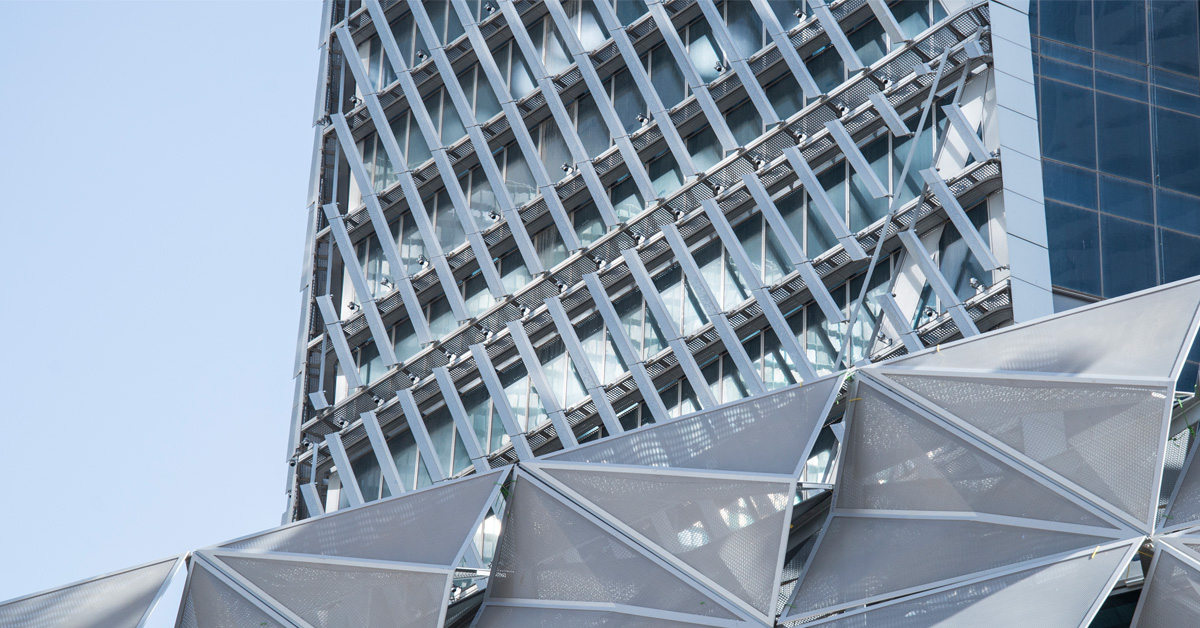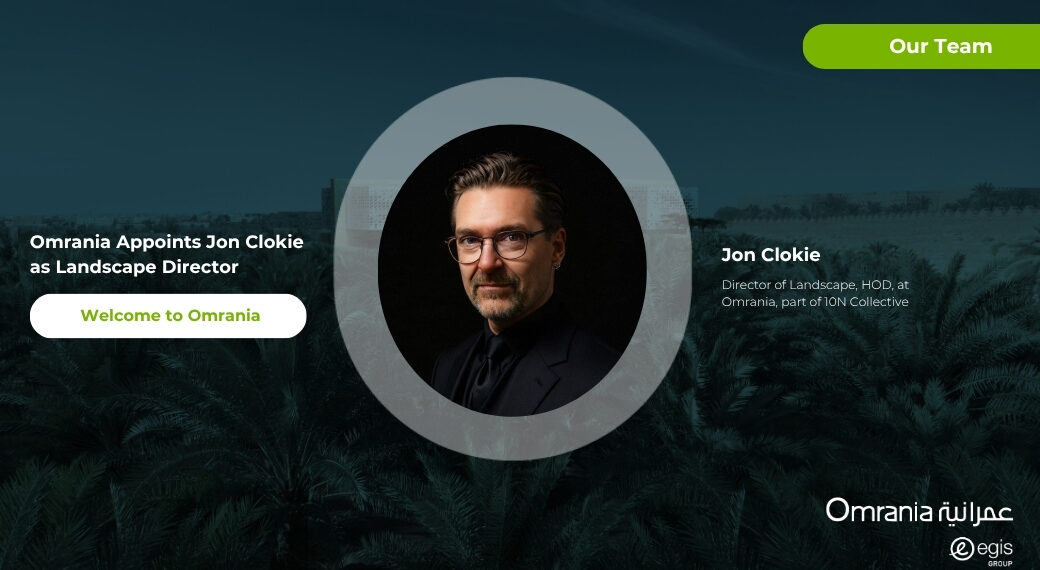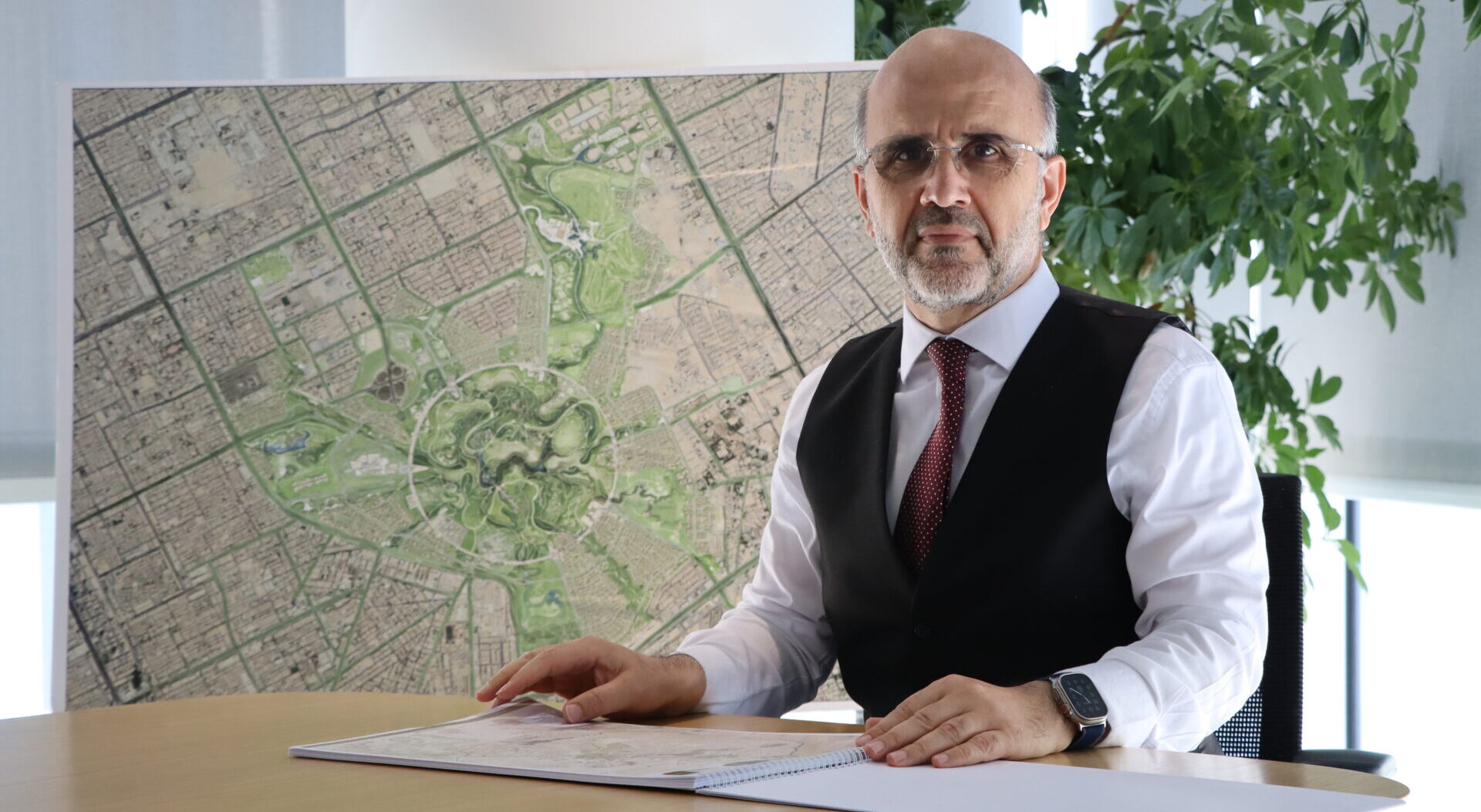 Capital Market Authority Headquarters, King Abdullah Financial District (KAFD), Riyadh, Saudi Arabia. Photo © Hani Al-Sayed / Omrania
Capital Market Authority Headquarters, King Abdullah Financial District (KAFD), Riyadh, Saudi Arabia. Photo © Hani Al-Sayed / Omrania .
Though often neglected until a building is nearly complete, O&M factors should be considered from the start of the design process and incorporated into the program, budget, and technical design of each project. Ultimately, for both architects and owners, successful O&M comes to define the legacy of a building as much as the quality of its design.
By: Marcus Leyland – Chief Architect
For those of us actively involved in building design and construction, the span between initial programming and final occupancy can seem like a lifetime. Yet, the certificate of occupancy only marks the end of the first stage in the true life of a building.
Building lifespans vary and can depart significantly from their expected service life. Given a 30-year service life of an ordinary office building, however, it’s interesting to observe that the accumulated costs of operations and maintenance will most likely exceed the costs of design and construction costs by a factor of three, according to Joseph J. Romm’s Sustainable Building Technical Manual. In other words — architects take note — a typical owner-operator will spend three times more money on O&M than on architecture. Both of these expenditures are typically dwarfed over 30 years by the amount spent on the organization’s human resources.
So, an organization’s most valuable investment is its people. Saving money on design and construction costs may be tempting in the short term, but it is counterproductive to overlook factors that might affect the productivity and wellness of occupants or the durability of the building, from well-engineered building systems to comfortable and inspiring work environments. These long-term factors can have a disproportionate effect on building and occupant performance for the subsequent service life.
The post-occupancy period of any building represents a substantial cost for the owner. Some of the ways to limit maintenance costs through sound O&M planning include:
· The early consideration of how maintenance might be carried out in a simple, safe, affordable, and practical manner.
· The durability of the material fabric of a building against the impact of weather.
· How design details might limit risk of failures in the performance characteristics of critical systems such as the envelope or ventilation system.
Neglect of O&M factors can lead to conditions that adversely affect building occupants, even leading in some cases to health problems such as illness, mental stress, eye-fatigue, and allergic reactions.
Industry standards for the operation and maintenance of buildings have existed for many years, including LEED, BREEAM, and BOMA. Many of these models touch upon O&M through design, service life maintenance, cleaning, energy systems management, and other aspects. As a consequence, design professionals and building owners have become more adept at providing comprehensive commissioning and recommissioning plans, and structured and costed O&M plans. These planning tools set a schedule for inspections, replacement programs, and proactive maintenance in order to optimize the lifespan of the building.
However, good O&M practice does not rely exclusively on the onerous process of certification by a third-party agency. Much of what represents proper operation and maintenance comes down to common-sense planning and practices, like not deferring maintenance until problems arise. Basic O&M simply needs an owner to recognize the value of these practices as an integral part of their business. It’s about long-term vision — developing policies and plans, implementing them, and cultivating institutional memory to uphold and renew such plans.
An experienced, multi-disciplinary design firm like Omrania can advise clients on this important aspect of building design and deliver an O&M plan suited to the specific needs of the owner and the project, whatever its type or scale. It is time for architects and owners alike to appreciate the value of O&M planning as an intrinsic part of building design and development.
This is the first in a series of posts on building operations and maintenance.
Omrania, a renowned architecture firm, has established a reputation for excellence in blending aesthetic and functional design, setting a benchmark for architecture firms in Riyadh, Saudi Arabia.







